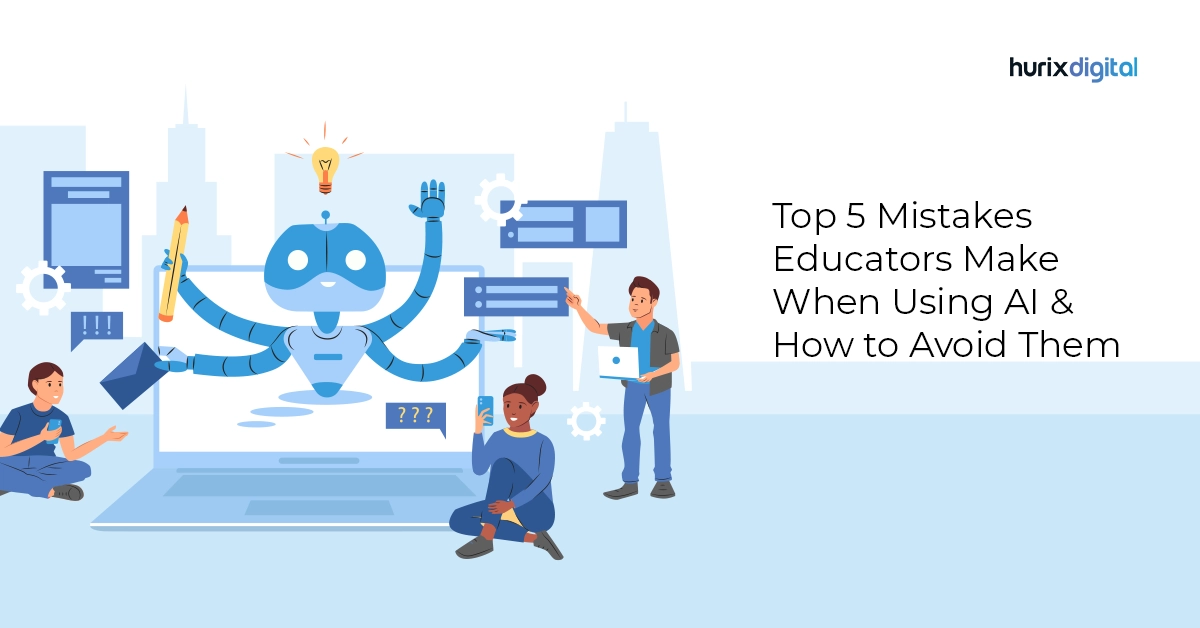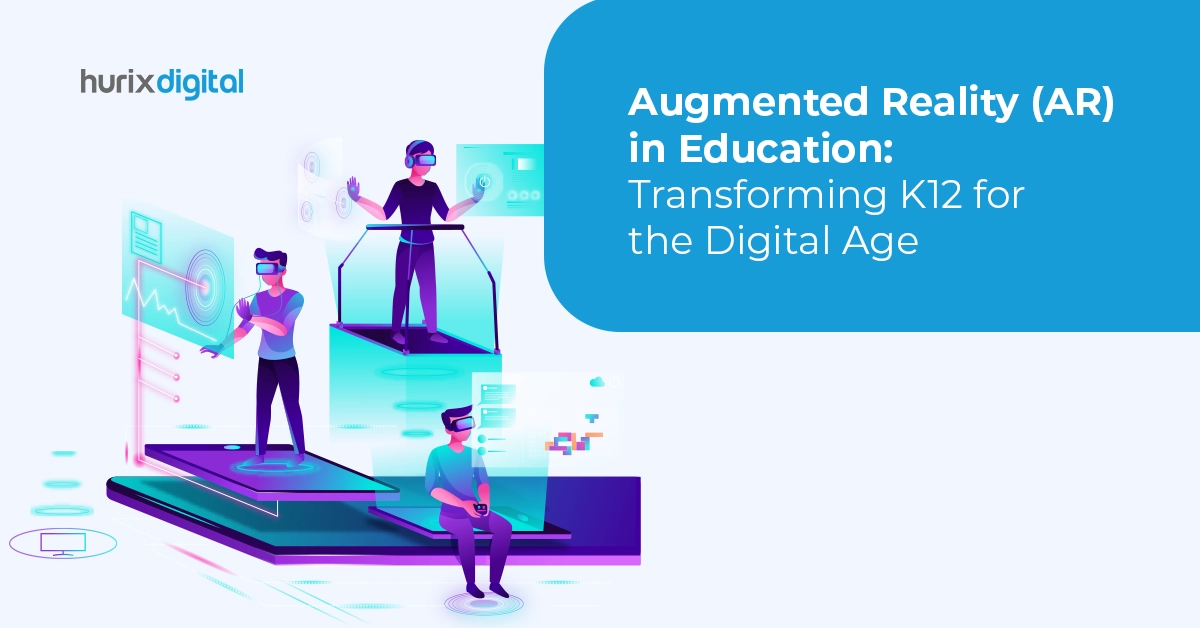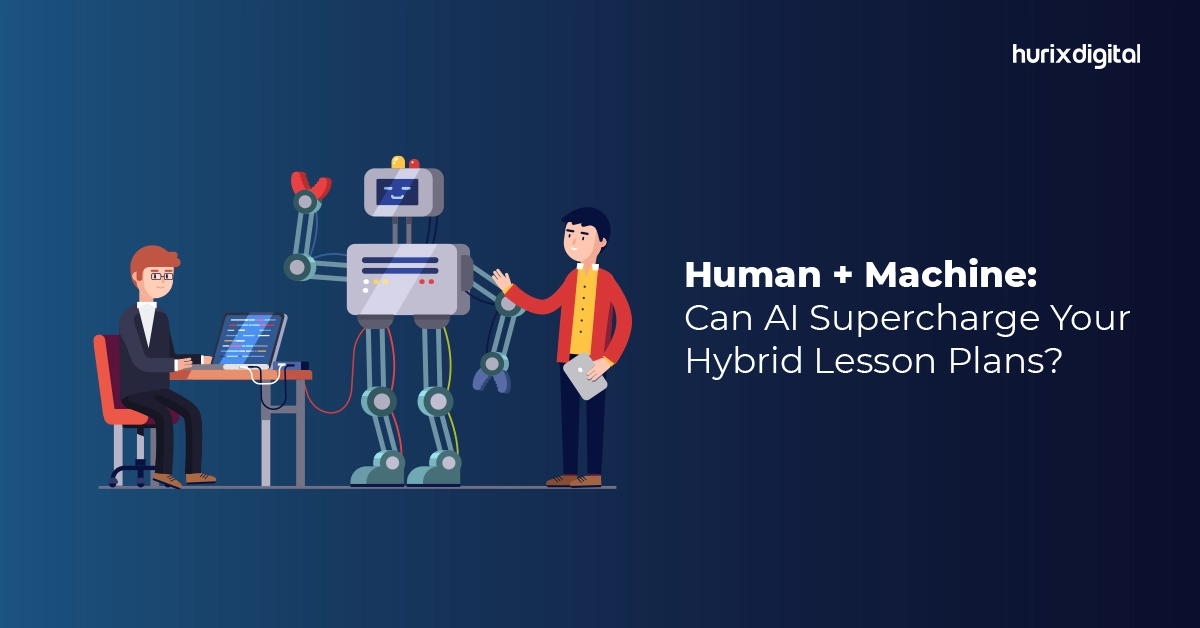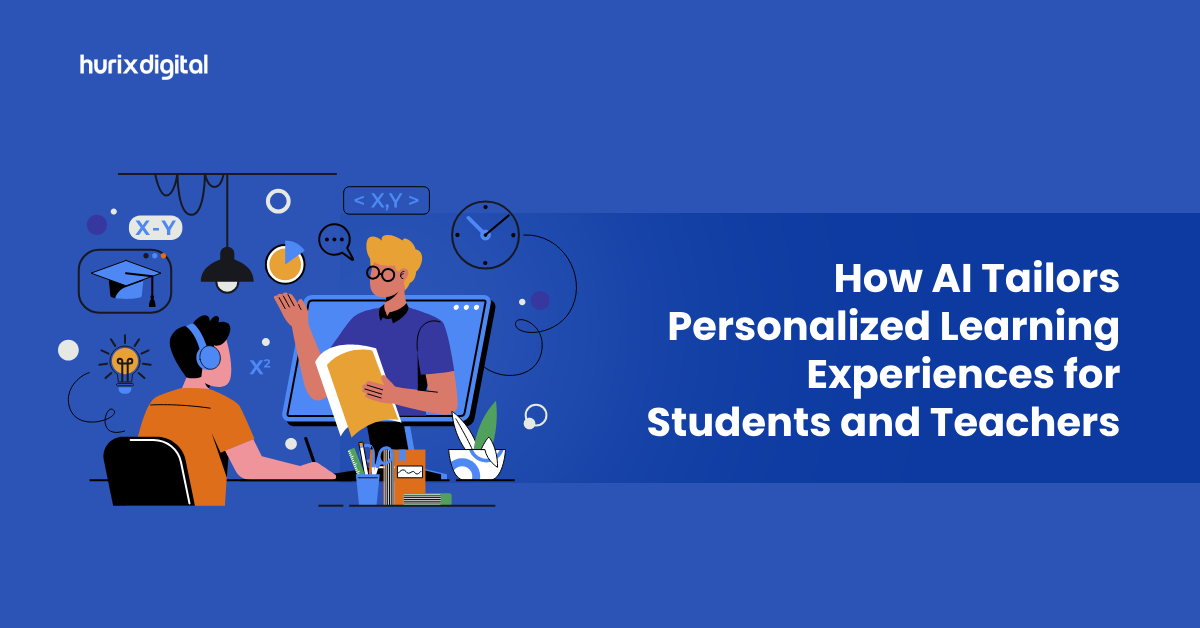Table of Contents:
- Mistake #1: Not Understanding the Basics of AI and Its Applications
- Mistake #2: Not Choosing the Right AI Tools for Your Educational Goals and Context
- Mistake #3: Not Involving Students and Parents in the AI Learning Process
- Mistake #4: Treating AI as a Substitute for Human Intelligence and Interaction
- Mistake #5: Giving Up After One Attempt with AI
- Conclusion
Artificial intelligence (AI) is transforming the world of education, offering new possibilities for personalized learning, data-driven insights, and interactive experiences. AI can help educators enhance their teaching methods, improve student outcomes, and reduce their workload.
The market size of AI reached USD 4 billion in 2022 and is projected to become over 10% CAGR from 2023 to 2032.
However, AI in education also comes with challenges and risks, such as technical difficulties, privacy concerns, ethical dilemmas, and social inequalities.
If not used properly, AI can have negative impacts on the quality and equity of education, as well as on the roles and responsibilities of educators and learners. Therefore, educators need to understand the benefits and limitations of AI and use it wisely and responsibly in their classrooms.
In this blog, we will discuss 5 common educator mistakes with AI and how to avoid them.
Mistake #1: Not Understanding the Basics of AI and Its Applications
AI is a broad term that can be classified into two types: narrow AI and general AI.
Narrow AI is created to perform specific tasks, such as image recognition, speech recognition, or game playing. General AI is the hypothetical ability of machines to exhibit human-like intelligence across a wide range of domains, which is still far from being achieved.
AI integration in classrooms can be done in various ways, such as:
- AI-powered learning platforms that adapt to each student’s pace, level, and preferences and provide personalized content, feedback, and guidance.
- AI-powered assessment tools that automate grading, scoring, and feedback and provide analytics and insights on student performance and learning trends.
- AI-powered chatbots and virtual assistants that provide instant answers, support, and interaction to students and teachers.
- AI-powered content creation tools that generate text, images, videos, or audio based on user input or data.
- AI-powered data analysis tools that collect and process data from various sources, such as student behavior, attendance, engagement, and satisfaction, and provide recommendations and predictions for educational improvement.
To use AI effectively in education, educators need to have a basic understanding of what AI is, how it works, and what it can and cannot do.
Also Read: AI-Powered Education: Revolutionizing K-12 Learning through Robotics and AI
Mistake #2: Not Choosing the Right AI Tools for Your Educational Goals and Context
AI tools for education are not one-size-fits-all solutions. They vary in terms of functionality, quality, usability, and suitability for different educational goals and contexts.
Therefore, educators need to be careful and selective when choosing AI tools for their classrooms and avoid using them for the sake of novelty or convenience.
Some factors to consider when choosing AI tools for educators are:
- The educational goals and objectives: What are the learning outcomes and competencies you want to achieve with your students? How can AI tools help you achieve them? How do they align with your curriculum standards and expectations?
- The evidence and evaluation: Questions to ask here include: What are the sources and quality of the data and information that the AI tools use and provide? How reliable and valid are they? How do you measure and evaluate the effectiveness and impact of the AI tools on your students’ learning and development?
- The ethical and social implications: What are the potential risks and benefits of using AI tools for your students, such as their privacy, security, safety, well-being, and inclusion? How do you ensure that the AI tools are fair, transparent, accountable, and respectful of human rights and values?
To choose the right AI tools for your educational goals and context, educators need to do some research and analysis and compare and contrast different options.
Mistake #3: Not Involving Students and Parents in the AI Learning Process
AI in education is not only about the technology but also about the people who use it. Educators should not use AI tools as a substitute or a supplement for their teaching but rather as a partner and facilitator for their students’ learning.
To gain AI benefits for educators, they need to involve students and parents in the AI learning process and empower them to be active and responsible participants. Some ways to do this are:
- Informing and educating students and parents about the purpose, function, and limitations of AI tools and how they can benefit their learning and development.
- Encouraging and enabling students and parents to interact and collaborate with the AI tools and to provide feedback and suggestions for improvement.
- Challenging and inspiring students and parents to explore and experiment with AI tools and to create and innovate with them.
- Developing and fostering students’ and parents’ digital and AI literacy skills, such as critical thinking, problem-solving, creativity, communication, and ethics.
Mistake #4: Treating AI as a Substitute for Human Intelligence and Interaction
AI is not a magic solution that can replace human intelligence and interaction in education. AI is a tool that can augment and enhance human capabilities but not replicate or surpass them.
AI cannot understand the nuances, emotions, and contexts of human communication and learning, nor can it provide the empathy, motivation, and inspiration that human teachers and peers can offer.
To avoid this AI challenge for educators, they need to:
- Use AI as a complement, not a substitute, for human intelligence and interaction in education.
- Leverage the strengths of AI, such as speed, accuracy, and scalability, to perform tasks that are tedious, repetitive, or beyond human capacity. This includes data processing, content generation, and feedback provision.
- Focus on the strengths of human intelligence and interaction, such as creativity, critical thinking, and collaboration, to perform tasks that require higher-order skills, such as problem-solving, inquiry, and innovation.
- Foster a positive and supportive learning environment that encourages human-AI collaboration and co-creation.
Mistake #5: Giving Up After One Attempt with AI
AI is not a perfect technology that can always provide accurate and satisfactory results. It is a dynamic and evolving technology that can sometimes produce errors, inconsistencies, or unexpected outcomes.
Artificial intelligence in education is also a learning technology that can improve over time with more data, feedback, and refinement.
To make sure this doesn’t happen, educators need to:
- Be patient and persistent when using AI-driven education.
- Do not give up after one attempt with AI, but rather try different approaches, inputs, or settings to optimize the results.
- Provide constructive feedback and suggestions to the AI developers and providers to help them improve the quality and functionality of the AI tools.
- Be open-minded and flexible when using AI in education, and be ready to adapt and adjust to the changing and emerging needs and opportunities of AI.
Also Read: Generative AI in Education: Know Meaning, Benefits & Challenges
Conclusion
AI in education can offer many benefits, but it also comes with challenges and risks. Educators need to avoid 5 common mistakes when using AI in education and use it effectively and ethically in their classrooms. By doing so, educators can enhance their teaching practice, improve student outcomes, and prepare students for the future.
If you are interested in learning more about AI in education and how to use it in your classroom, Hurix Digital can help you. Hurix Digital is a leading provider of digital learning solutions, including AI-powered learning platforms, content creation tools, and data analysis tools.
We can help you design and deliver engaging, personalized, and effective learning experiences for your students and help you achieve your educational goals and objectives.
Contact Hurix Digital today and discover how AI can transform your education.










